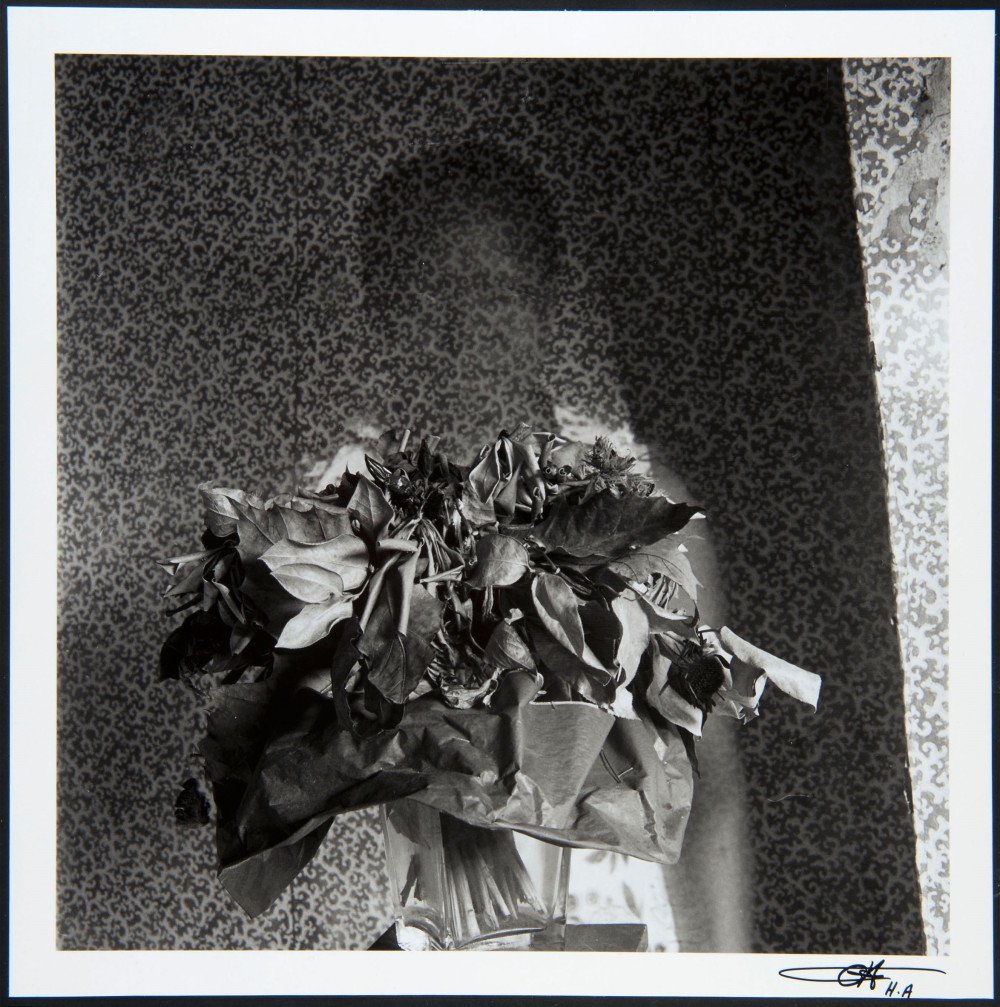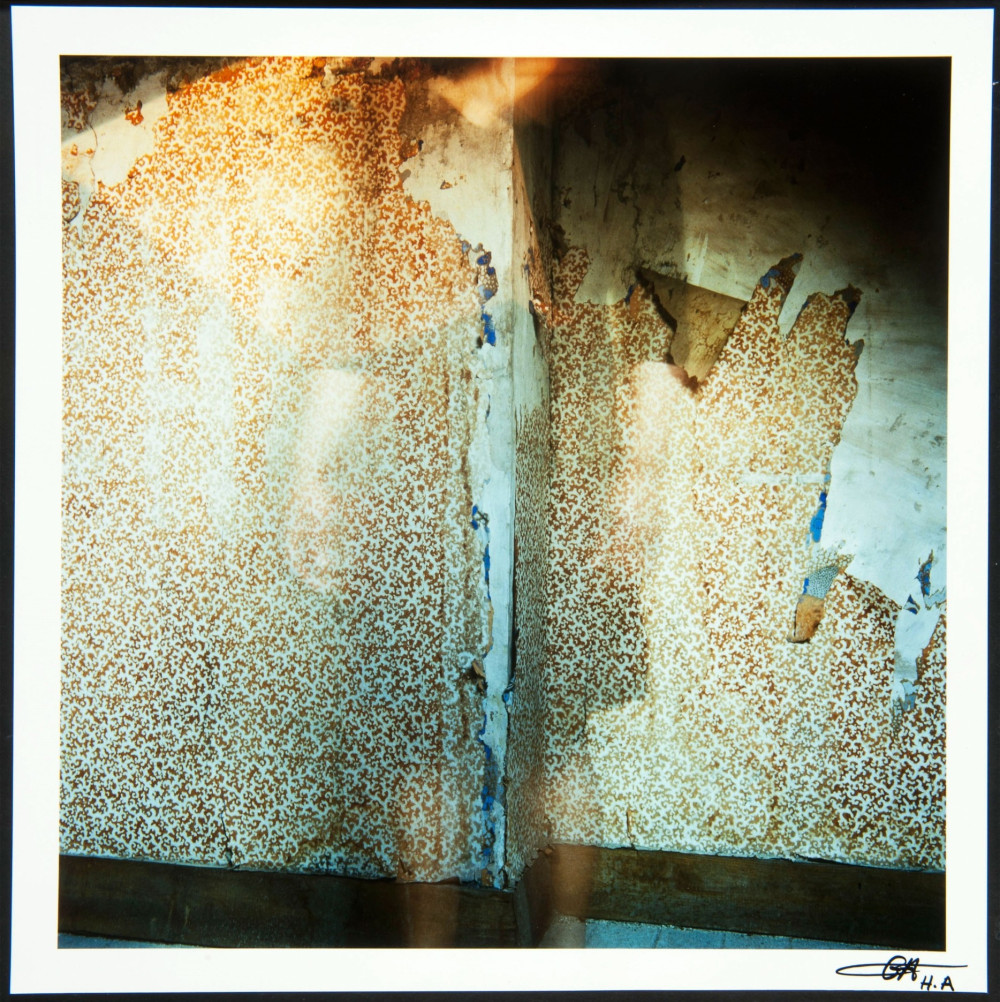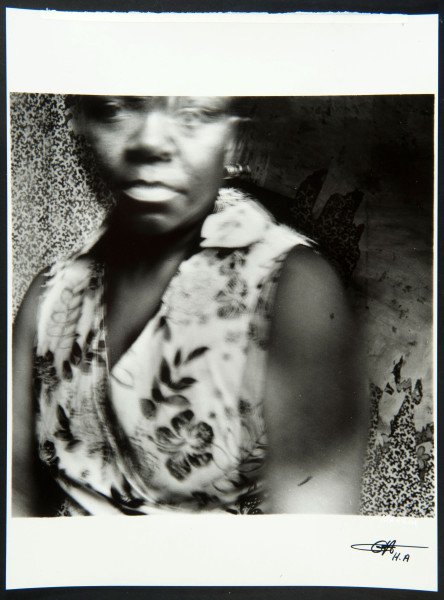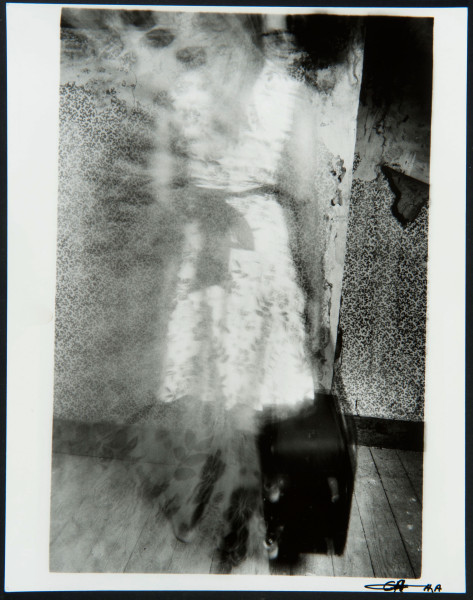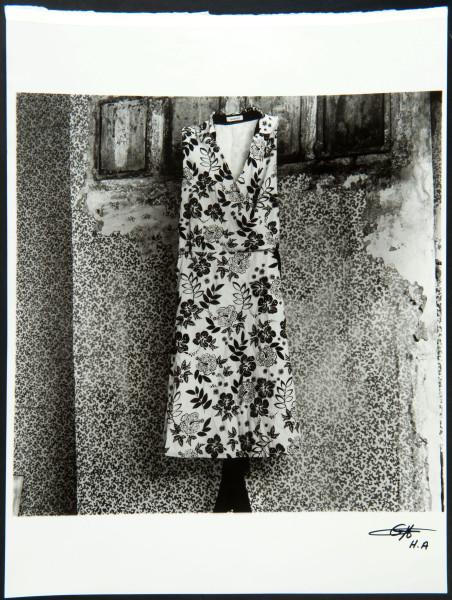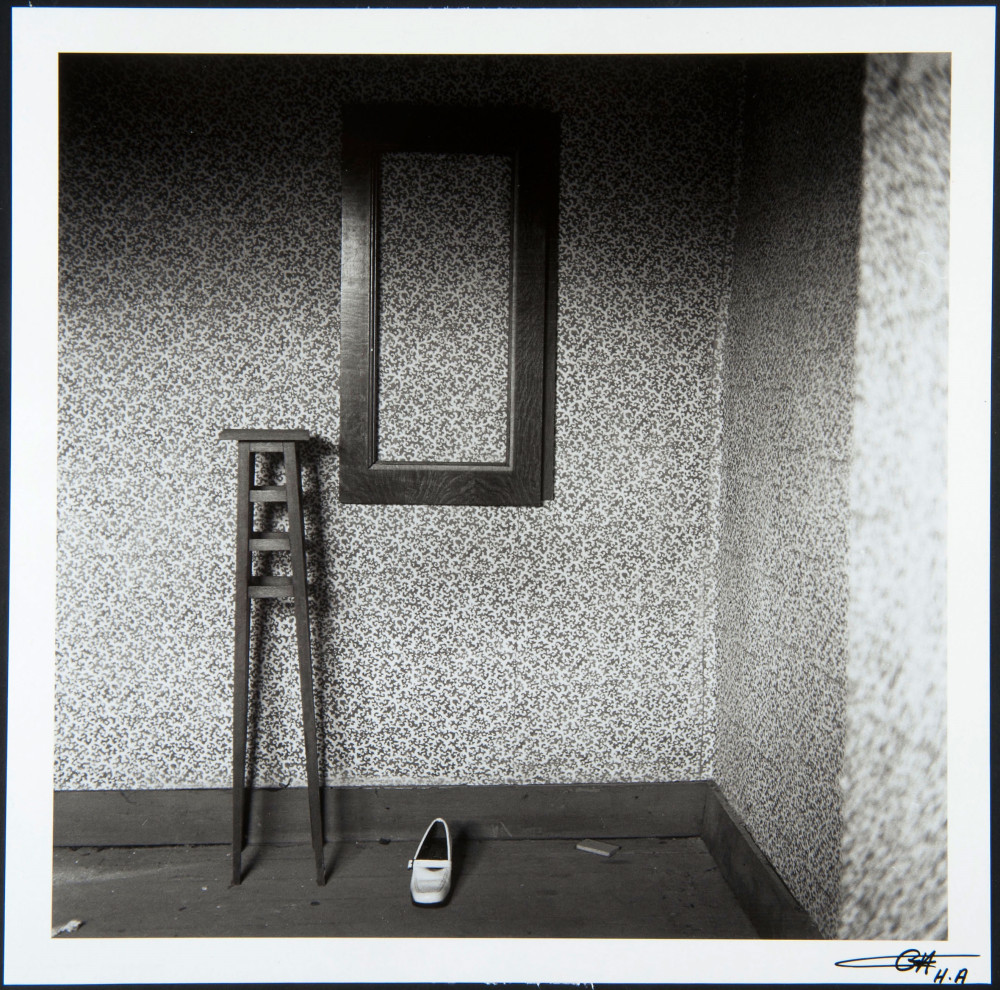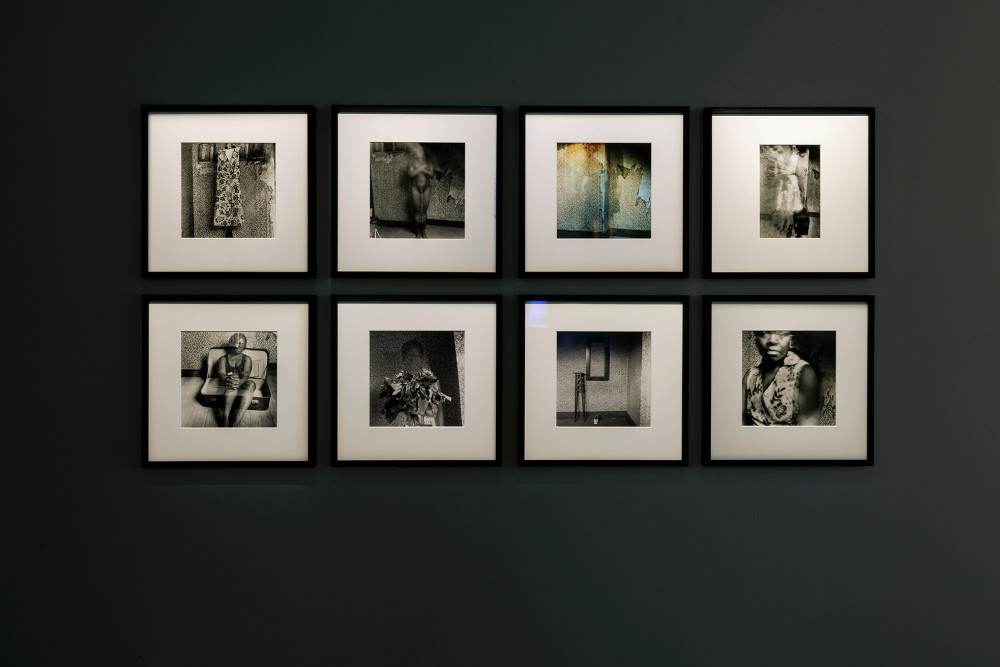
Light streams into the attic from a side window, capturing the patterns of a worn wallpaper and a bouquet of flowers silently resting on a table. In its journey, light has been able to fix the setting in great detail, yet somehow cannot seem to record the figure of a woman quietly staring behind the blossoms. Her image is portrayed as a silhouette, a ghostly blur whose eyes peer past the background and meet ours. This woman is Hélène Amouzou.
